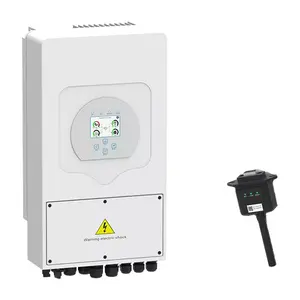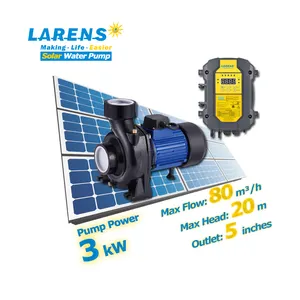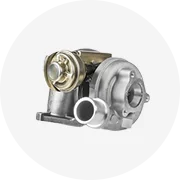Phổ biến trong ngành của bạn

Saidkocc cam pem điện phân di động 20A nước tinh khiết điện cho hấp thụ/phong phú Hydrogen máy nước 60ml ~ 1500ml
32,97 US$ - 323,58 US$
Đơn hàng tối thiểu: 2 Cái
Vận chuyển mỗi chiếc: 11,69 US$


Tấm Lưỡng Cực Than Chì Cho Pin Nhiên Liệu Oxy Hydro Và Các Lĩnh Vực Khác
20,00 US$ - 50,00 US$
Đơn hàng tối thiểu: 1 Cái


Saidkocc pem/SPE di động 20A Điện phân nước Hydro sản xuất và h hấp thụ máy electrolyze máng
28,67 US$ - 462,17 US$
Đơn hàng tối thiểu: 10 Cái
Vận chuyển mỗi chiếc: 5,11 US$


Suyzeko giá rẻ bán buôn pem điện phân Hydro Máy phát điện phân tử Hydro máy hít 150ml
199,00 US$ - 299,00 US$
Đơn hàng tối thiểu: 10 Bộ
Vận chuyển mỗi chiếc: 0,00 US$


Bán Nóng 100 Ml/phút Độ Tinh Khiết Cao H2 Máy Phát Điện Hydro Máy Điện Phân PEM
95,00 US$ - 100,00 US$
Đơn hàng tối thiểu: 1 Cái
Vận chuyển mỗi chiếc: 20,02 US$


Rubri 10KW 30Kw 60kw 80kw 110Kw Pin nhiên liệu Hydro pem để cung cấp năng lượng dự phòng Pin nhiên liệu pem
1.789,00 US$ - 8.750,00 US$
Đơn hàng tối thiểu: 2 Đơn vị

Nhà Máy Phát Điện Hydro Trung Quốc Sản Xuất Máy Điện Phân Nước Điện Cho Máy Phát Điện Pin Nhiên Liệu Thiết Bị Hydro Xanh PEM
500.000,00 US$ - 3.000.000,00 US$
Đơn hàng tối thiểu: 1 Bộ

Dupond pem N117 độ tin cậy cao Hydro nhiên liệu di động máy phát điện nước tinh khiết điện 50 100 300 600 1000 1400 1800 2000 ml/phút
32,00 US$ - 712,00 US$
Đơn hàng tối thiểu: 1 Bộ
Vận chuyển mỗi chiếc: 33,47 US$

Ngăn Chứa Pin Nhiên Liệu Hydro Làm Mát Không Khí BCH PEM 500W Với Tấm Lưỡng Cực Kim Loại
6.360,00 US$ - 6.790,00 US$
Đơn hàng tối thiểu: 1 Bộ

Hydrogen Máy phát điện làm mát bằng không khí pem 3000 Wát H2 tế bào nhiên liệu Stack cho sao lưu điện
8.100,00 US$ - 8.500,00 US$
Đơn hàng tối thiểu: 1 Cái

SENZA Hydrogen Fuel Cell 300-1200 Ml/phút PEM H2 Electrolyser Nước Kích Thước Nhỏ
135,00 US$ - 175,00 US$
Đơn hàng tối thiểu: 1 Cái
Vận chuyển mỗi chiếc: 29,58 US$

Hiệu suất tốt bangwin độ tinh khiết cao 99.999% Hydro tế bào nhiên liệu điện máy phát điện Alk pem với electolyzer
39.996,00 US$ - 45.000,00 US$
Đơn hàng tối thiểu: 1 Cái

Pem membran nước điện Hydro Máy phát điện nhiên liệu di động electrolyzer màu xanh lá cây Hydro nhà máy sản xuất khí Hydro pem bán
39.996,00 US$ - 39.998,00 US$
Đơn hàng tối thiểu: 1 Bộ

SPE PEM Máy Phát Điện Ml/phút 100 Máy Hít Khí Hydro Pin Nhiên Liệu Máy Hít Khí Hydro Gia Dụng H2
185,00 US$ - 210,00 US$
Đơn hàng tối thiểu: 3 Bộ

Màng Trao Đổi Proton Từ Trung Quốc, VET Hydrogen Fuel Cell Pem
30,00 US$ - 200,00 US$
Đơn hàng tối thiểu: 5 Cái

Nhà máy trực tiếp 1800ml tế bào nhiên liệu Hydro sản xuất AEM/SPE Công nghệ Hydro Máy phát điện pem
Sẵn sàng vận chuyển
488,00 US$ - 568,00 US$
Đơn hàng tối thiểu: 1 Cái
Vận chuyển mỗi chiếc: 24,81 US$

H2 khí Hydro tạo ra electrolyser pem Hydro Máy phát điện điện phân di động pem
159,00 US$ - 2.549,00 US$
Đơn hàng tối thiểu: 1 Bộ

H2 khí Hydro tạo ra electrolyser pem Hydro Máy phát điện điện phân di động pem
159,00 US$ - 2.549,00 US$
Đơn hàng tối thiểu: 1 Bộ

Daze 2kw Off Grid Hydrogen nhiên liệu di động pem H2 Máy phát điện với Hydrogen năng lượng lưu trữ 20L 30L 45L
4.859,00 US$ - 4.989,00 US$
Đơn hàng tối thiểu: 2 Cái

Dropshipping Cawolo Thương Hiệu 600Ml Pin Nhiên Liệu Hydro Pem
900,00 US$ - 1.500,00 US$
Đơn hàng tối thiểu: 1 Cái

Giấy Chứng nhận CE pem H2 nhiên liệu di động 220V Mini Hydrogen nhiên liệu di động cho bán
2.700,00 US$ - 2.787,00 US$
Đơn hàng tối thiểu: 1 Bộ
Vận chuyển mỗi chiếc: 2.003,00 US$

Pin điện phân Hydro pem 60 ml/phút cho pin nhiên liệu
153,00 US$ - 180,00 US$
Đơn hàng tối thiểu: 1 Bộ
Vận chuyển mỗi chiếc: 60,00 US$

Cách mạng công nghệ Hydro di động pem 80kw độ bền hho Hydro di động động cơ cho xe Kit
132.900,00 US$ - 133.920,00 US$
Đơn hàng tối thiểu: 1 Bộ

Nhà công nghiệp Hydrogen Máy phát điện 10KW công nghiệp H2 Stack Hydrogen Máy phát điện màu xanh lá cây 2nm3/h hho tế bào nhiên liệu pem electrolyzer
7.700,00 US$ - 43.330,00 US$
Đơn hàng tối thiểu: 1 Cái

Electrolyser Pem Và Dầu Miễn Phí Hydro Sản Xuất Nhiên Liệu Di Động Điền Trạm
990.000,00 US$ - 1.000.000,00 US$
Đơn hàng tối thiểu: 1 Cái

30Kw 42 hiệu quả Hydro năng lượng pem nhiên liệu di động pem Hydro Máy phát điện cho xe buýt
40.000,00 US$ - 70.000,00 US$
Đơn hàng tối thiểu: 1 Cái

Nhà cung cấp dịch vụ tốt pem Hydro Máy phát điện electrolyzer 30Kw Hydro năng lượng pem nhiên liệu di động pem Hydro Máy phát điện cho xe buýt
54.000,00 US$ - 55.000,00 US$
Đơn hàng tối thiểu: 1 Bộ

Xách tay miễn phí của BPA pem/SPE Hydrogen chai nước Hydrogen máy nước với Hydrogen hít tùy chọn
Sẵn sàng vận chuyển
55,00 US$ - 59,00 US$
Đơn hàng tối thiểu: 1 Cái
Vận chuyển mỗi chiếc: 17,88 US$

Công Nghiệp Nhà Máy phát điện Hydro công nghiệp H2 Stack Máy phát điện khí Hydro màu xanh lá cây hho tế bào nhiên liệu pem electrolyzer
30.000,00 US$ - 34.000,00 US$
Đơn hàng tối thiểu: 1 Bộ

1000 ml/phút H2 Hydrogen gitan điện cực nhà sản xuất của pem/SPE nước điện phân electrolyser/điện Phân
30,00 US$ - 750,00 US$
Đơn hàng tối thiểu: 1 Cái

Yanan Pin Nhiên Liệu Hydro Pem Giá Máy Phát Điện Chạy Điện 1kw Với Chất Lượng Cao Cho Gia Đình
4.800,00 US$ - 5.000,00 US$
Đơn hàng tối thiểu: 2 Bộ


Brogen Pin Hydro 140 KW Pin Nhiên Liệu Bom Với Độ Bền 10000 Giờ Cho Xe Buýt Xe Tải Ev
2.100,00 US$ - 2.183,00 US$
Đơn hàng tối thiểu: 30 Kilowatt

Dupont Hydro tế bào nhiên liệu Proton trao đổi màng nc700
18,00 US$ - 2.954,00 US$
Đơn hàng tối thiểu: 1 Cái

Tấm Lưỡng Cực Kim Loại Pin Nhiên Liệu Hydro SS316 Tấm Lưỡng Cực Cực Cực Dương Cực Dương Pin Nhiên Liệu PEM
29,00 US$ - 198,00 US$
Đơn hàng tối thiểu: 10 Cái


Bán Chạy Nhất Máy Phát Điện Hydro Chất Điện Phân PEM Bán Pin Điện Phân Với Màng Trao Đổi Nafion 117 Proton Cho Pin Nhiên Liệu
85,00 US$ - 460,00 US$
Đơn hàng tối thiểu: 1 Cái

Trung Quốc nhà máy bán buôn 255 kW xe thương mại Hydro nhiên liệu di động động cơ Hydro tế bào nhiên liệu
700,00 US$ - 1.000,00 US$
Đơn hàng tối thiểu: 1 Cái
Vận chuyển mỗi chiếc: 94,32 US$

600ml độ tinh khiết cao EFFCIENCY nước tinh khiết Hydro Máy phát điện pem SPE Hydro tế bào nhiên liệu electrolyzer
250,00 US$ - 285,00 US$
Đơn hàng tối thiểu: 1 Đơn vị

Bán Buôn Chất Lượng Cao Hydrogen Nhiên Liệu Máy Phát Điện Cho Hydrogen Chai Nước
40,00 US$ - 55,00 US$
Đơn hàng tối thiểu: 2 Bộ
Các danh mục hàng đầu
Giới thiệu về pin nhiên liệu hydro pem
Alibaba.com cung cấp các sản phẩm 2520 pin nhiên liệu hydro pem. Có rất nhiều pin nhiên liệu hydro pem lựa chọn dành cho bạn, chẳng hạn như các công cụ điện, điện hệ thống điện, và xe điện.














